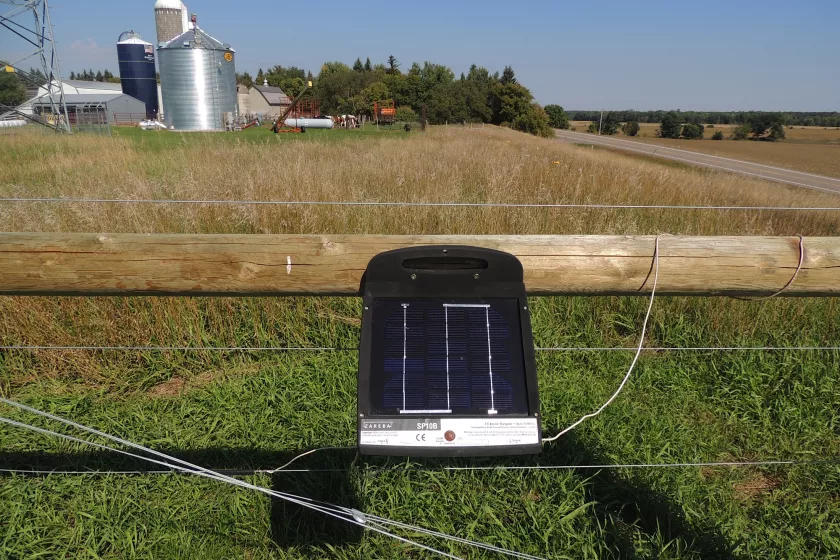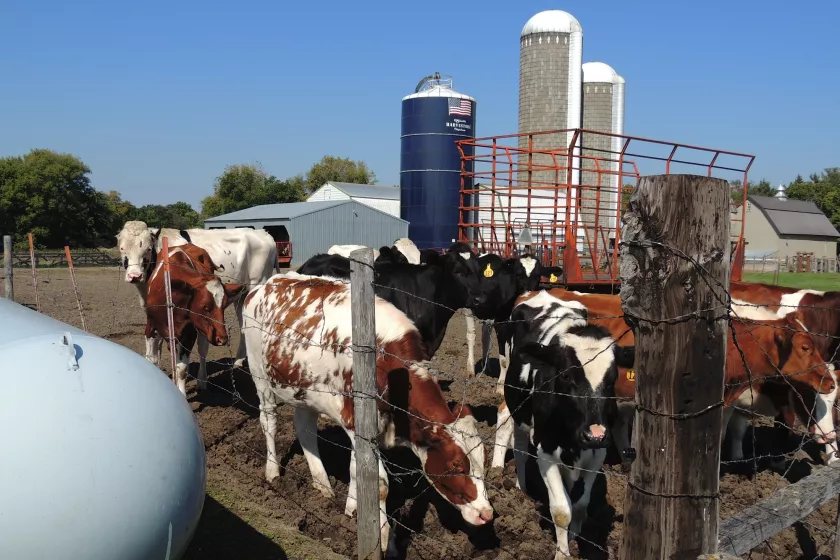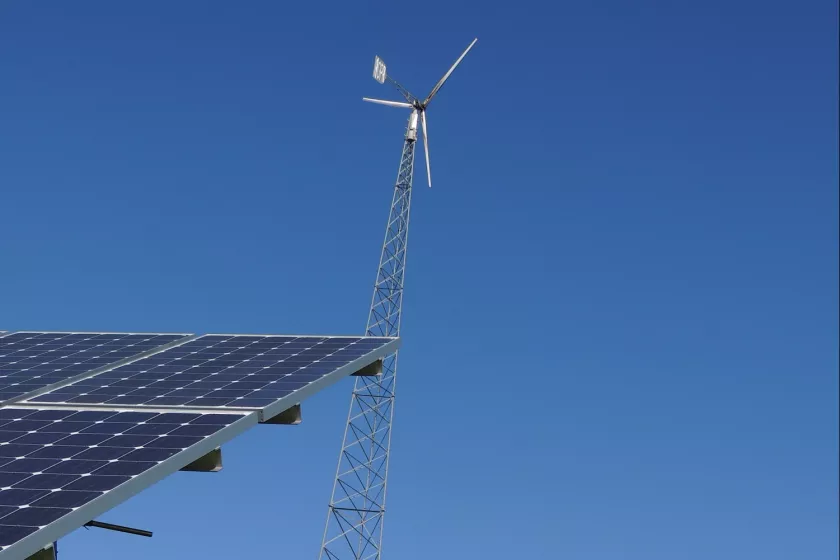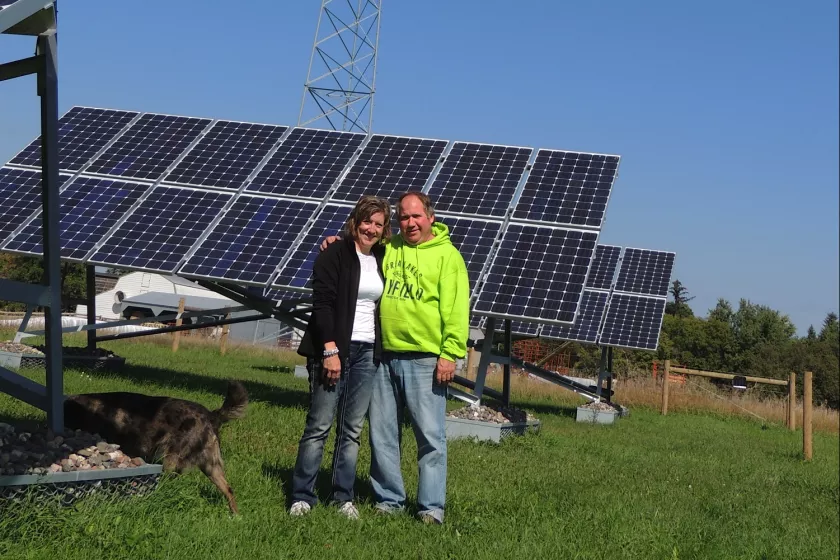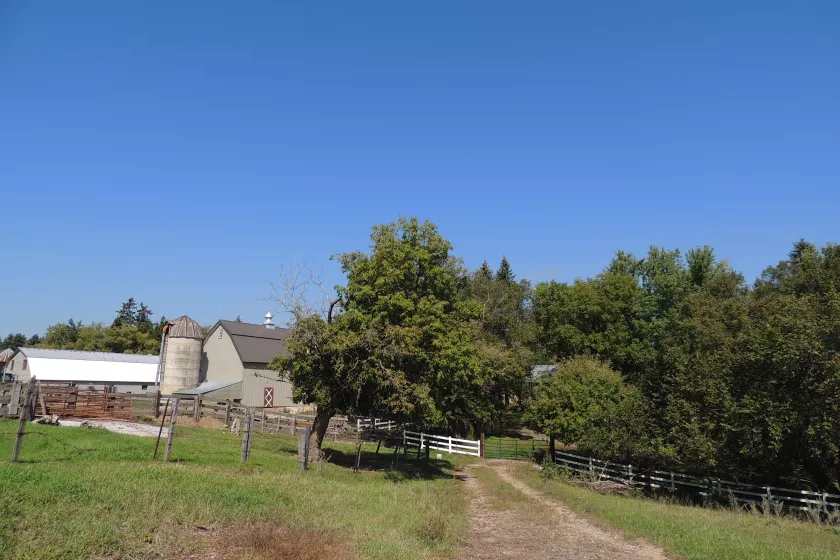In an age of disappearing small and medium size farms, Doug and Jane Popp are making their medium-sized dairy and crop operation near Royalton, MN work.
After talking with them for a while, it becomes clear how. They have a passion for farming and the way of life it offers, and a keen eye for the bottom line—which includes a farmer’s frugality, as well as a creativity and willingness to seize good opportunities. Top on the list of these seized opportunities? The Popps put the wind, the sun, and energy efficient technologies to work for them!

